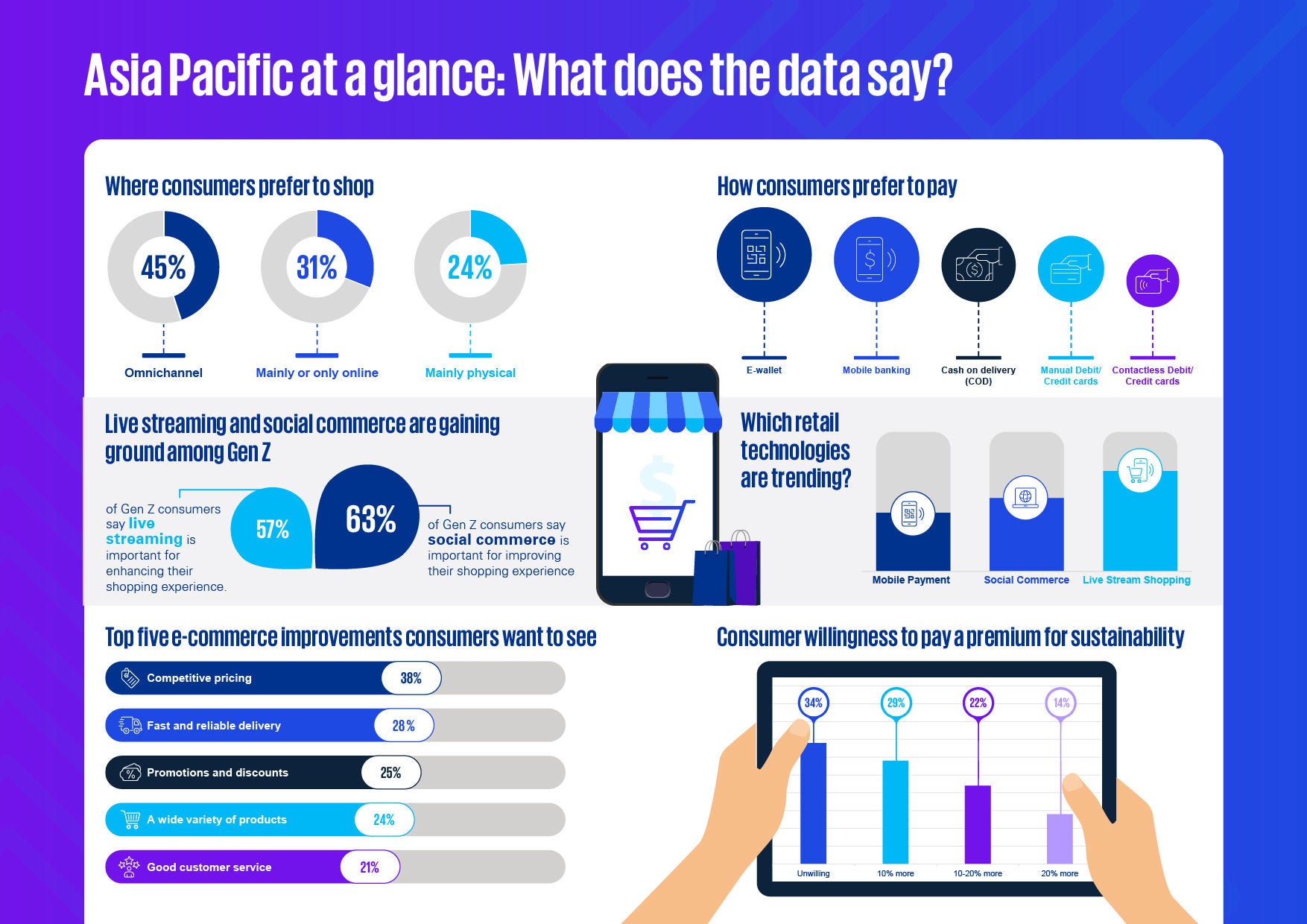Following on from the post-pandemic recovery, consumers across the Asia-Pacific region have been adapting to many challenges: inflation, a cost-of-living crisis, and supply-chain-related instability of product availability, to name a few.
KPMG together with GS1 has produced this report based on a survey of 7,000 consumers across 14 markets in the region reflecting multiple patterns and expectations among consumer groups. About half of the respondents in each market were from the Gen Z group (18 to 24), and in addition to the research, the report features interviews with senior C-suite-level executives from market-leading retailers, brands, and e-commerce marketplaces.
One overriding conclusion is clear: The era of seamless commerce has arrived and while both online and offline channels remain popular throughout the region, traditional retail business models are unlikely to meet the expectations of many of today’s consumers. Retailers and brands have to adapt or face the consequence of not moving with the market.
Read the report today to learn more about navigating the retail landscape in the region.
Navigating the future of seamless commerce in Asia Pacific
This report by KPMG and GS1 surveys 7,000 consumers across 14 Asia-Pacific markets, exploring post pandemic opportunities and the era of seamless commerce.



Gen Z consumers are the key to retail’s future growth and shape
This demographic is driving unprecedented change because of their markedly different attitudes toward lifestyle and priorities, especially in online shopping behavior, sustainability concerns and their use of retail technology. While consumers overall across Asia Pacific identified mobile payment as the retail tech they have tried the most, among Gen Z the most popular was social commerce – especially in China, Vietnam, Indonesia and the Philippines.

Know your customers:
To meaningfully serve consumers who are increasingly price-sensitive yet demand orchestrated experiences, businesses must first consider how to infuse technology at the right and critical moment, making technology the key driver of seamless omnichannel experiences.
The arrival of seamless commerce: fueled by platforms
What was once merely a buzzword, omnichannel has now given way to a more comprehensive approach that seamlessly integrates various platforms and services. This shift, accelerated by the pandemic, has propelled retailers to invest heavily in technology, AI solutions, and streamlined supply chains to meet the demands of an increasingly digital-savvy consumer base.

The continued rise of digital payments
Digital e-wallets are gaining ground in Southeast Asia, while debit or credit cards remain dominant in more developed economies such as Australia, New Zealand, Japan, Singapore and South Korea. By meaningfully taking these variations into account and offering local payment options tailored to target regions, retailers can expand their reach, both locally and internationally.


AI is shaping customer experiences and driving sales
AI is already playing a significant role by enriching the shopping experience across various sectors such as beauty, home furniture, and apparel. With continued market support, AI can substantially improve the operational efficiency of retail stores and fine-tune the consumer experience at crucial points in the shopping journey.

The unstoppable drive towards sustainability
Sustainability isn't a marketing add-on, it's the baseline. Brands should stitch diversity, ethics, and social responsibility into their core, 65 percent of consumers in Asia-Pacific are willing to pay a premium for sustainability. This is the future of commerce, sewn by a generation with hearts and wallets for the green revolution. Regulators and investors echo the call, but consumer pressure roars loudest.



